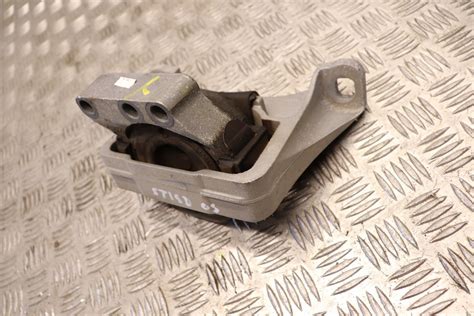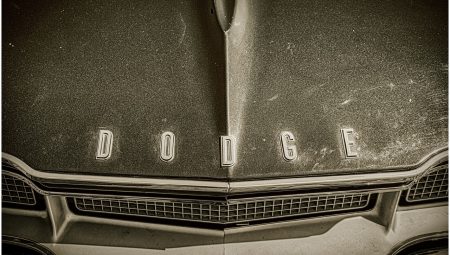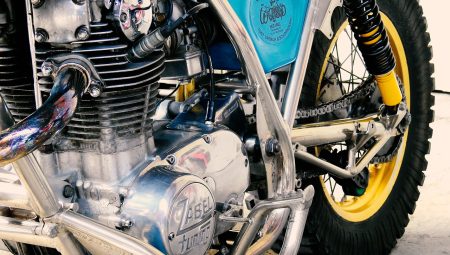Discover the significance of engine mounts, signs of failure, selection tips for your Focus ST, DIY replacement, and the advantages of performance upgrades.When it comes to performance vehicles like the Ford Focus ST, the engine mount plays a crucial role in both stability and driving experience. This often-overlooked component is not just a simple support but a key player in minimizing vibrations and ensuring optimal engine alignment. Understanding the importance of engine mounts can help you identify common signs of failure, which, if left unattended, can lead to more significant issues and costly repairs. Whether you’re contemplating a standard replacement or an upgrade to solid performance mounts, choosing the right engine mount is essential. In this blog post, we’ll explore the signs of failing engine mounts, provide a step-by-step guide for DIY replacement, and discuss the benefits of upgrading to performance engine mounts for your Focus ST. Join us as we delve into everything you need to know about keeping your ride smooth and responsive.
Understanding the Importance of Engine Mounts
Engine mounts are critical components in any vehicle, including the Focus ST, as they serve the essential purpose of securing the engine to the chassis, thereby minimizing vibrations and enhancing overall vehicle performance. These mounts, typically made of rubber and metal, absorb any shocks or movements resulting from the engine’s operation, thereby contributing to a smoother ride and reducing wear and tear on other parts of the vehicle. Given their role in stabilizing the engine, it is important to understand that a failure in these mounts can lead to significant issues, including misalignment, increased vibrations, and even damage to the engine or transmission.
Moreover, the importance of engine mounts is not just limited to providing stability; they are also integral in maintaining proper engine alignment and preventing unnecessary movements that could lead to damage in other critical components. In the case of the Focus ST, which is designed for performance, having efficient and functional engine mounts ensures that power is transmitted effectively to the wheels, thereby contributing to the vehicle’s acceleration and handling characteristics. When engine mounts are functioning as intended, they play a pivotal role in delivering an enjoyable driving experience and preserving the longevity of the vehicle.
In conclusion, the importance of engine mounts cannot be overstated, particularly for performance-oriented vehicles like the Focus ST, as they not only enhance ride quality and performance but also protect the engine and related components from undue stress and potential damage. Ensuring that these mounts are regularly checked and maintained is vital for any owner who wants to enjoy the thrilling capabilities of their Focus ST without compromising on reliability or performance.
Common Signs of Failing Engine Mounts
When it comes to ensuring that your vehicle operates smoothly and efficiently, one of the critical components that often gets overlooked is the engine mount, which plays a fundamental role in stabilizing the engine and minimizing vibrations that can be erroneously mistaken for other issues; thus, being able to identify the common signs of failing engine mounts can not only save you from potentially costly repairs down the line but also enhance your driving experience significantly.
One of the first and most noticeable signs of failing engine mounts is an increase in engine vibrations, which can lead to an uncomfortable ride and potential performance issues, as these vibrations may feel like they are penetrating the vehicle’s cabin, giving you an unsettling sensation while driving, and if you notice that the engine seems to be moving excessively during acceleration or deceleration, it might be time to have a closer look at your mounts.
Additionally, you might observe a clunking noise or a thudding sound whenever shifting gears, especially if you drive a manual transmission vehicle; these noises can be indicative of a worn or broken engine mount, as the engine shifts and rocks more than it should, thus causing the components to collide against one another, highlighting the necessity of addressing the issue promptly to avoid further damage to the engine and surrounding parts.
Ultimately, it is advisable to pay close attention to any unusual symptoms—such as dashboard warning lights, uneven tire wear, or difficulty in aligning the vehicle—because these could signify that your engine mounts are in need of inspection or replacement; by tackling the issue sooner rather than later, you can maintain your Focus ST in optimal condition and prevent smaller problems from escalating into major repairs.
Choosing the Right Engine Mount for Your Focus ST
When it comes to ensuring that your Focus ST runs smoothly and efficiently, selecting the right engine mount is paramount, as these components play a crucial role in supporting the engine, minimizing vibration, and maintaining the alignment of various driveline parts.
It is important to consider several factors when choosing the appropriate engine mount, including factors such as the type of driving you do—whether it’s daily commuting or spirited driving—your vehicle’s performance needs, and the specific material of the engine mount, as options range from traditional rubber mounts to more advanced materials like polyurethane or even solid mounts, each offering varying levels of stiffness and vibration absorption.
To assist you in making an informed decision, here is a simple comparison table that outlines the advantages and disadvantages of different types of engine mounts:
| Mount Type | Advantages | Disadvantages |
|---|---|---|
| Rubber Mounts | Standard comfort, good vibration dampening | Less durable under high performance conditions |
| Polyurethane Mounts | Increased stiffness, improved throttle response | Can increase vibration and noise |
| Solid Mounts | Minimal movement, excellent performance | Very harsh ride quality, increased noise |
Ultimately, the choice of engine mount for your Focus ST should reflect your personal driving preferences and the balance between comfort and performance you wi
DIY Engine Mount Replacement Steps
Replacing your engine mounts is a crucial maintenance task that not only enhances the overall ride quality of your vehicle but also ensures that the engine remains securely attached to the chassis, thereby reducing unwanted vibrations that can cause long-term damage. One of the car models where engine mounts play a significant role is the Focus ST, a performance-oriented compact car known for its agility and power, and a well-executed engine mount replacement can significantly improve your driving experience.
Before you embark on this DIY engine mount replacement project, it is essential to gather the necessary tools and materials to ensure a smooth and efficient process; the tools you will need include a socket set, wrenches, a hydraulic jack, jack stands, and a torque wrench, while additional materials may consist of new engine mounts, rubber bushings, and perhaps some thread locker to secure your bolts properly.
Here’s a quick overview of the steps to follow for a successful engine mount replacement:
- First, ensure that the car is parked on a flat surface, then use the hydraulic jack to lift the vehicle, securing it with jack stands for safety.
- Next, remove any components that may obstruct access to the engine mounts, which may include the air intake or other surrounding parts.
- Once you have clear access, unscrew the bolts securing the old engine mounts, and carefully lift the engine slightly to remove the old mounts.
- Install the new engine mounts in the reverse order of removal, making sure to tighten all bolts to their specified torque settings to prevent future issues.
Finally, it’s a good practice to double-check all the fastenings and reconnect any components that were removed during the process, as this ensures everything is working efficiently and effectively once you take your Focus ST back on the road.
Benefits of Upgrading to Performance Engine Mounts
Upgrading to performance engine mounts can significantly enhance the overall driving experience of your Ford Focus ST, as these specialized mounts are designed to provide superior stability and handling under various driving conditions, thereby reducing unwanted engine movement and improving throttle response.
One of the primary benefits of these performance mounts is the increased rigidity they offer, which translates to more direct power transfer from the engine to the transmission, allowing for improved acceleration and enhanced responsiveness, especially during high-demand scenarios such as track racing or spirited driving on twisty roads.
Moreover, performance engine mounts often come with upgraded materials that are more resistant to wear and tear compared to the factory alternatives, meaning they can endure harsher driving conditions, lower vibration resonance, and longer-lasting service life, thus resulting in fewer replacements and potential maintenance costs over ti
Frequently Asked Questions
What is the purpose of an engine mount?
The primary purpose of an engine mount is to secure the engine to the vehicle chassis, reducing vibrations and supporting the engine’s weight.
What are the signs of a failing engine mount?
Common signs of a failing engine mount include excessive vibration, unusual noises during acceleration, engine movement during hard braking, and misalignment of other components.
How often should engine mounts be inspected or replaced?
It’s generally recommended to inspect engine mounts during routine maintenance and replace them as needed, typically every 5-7 years or as symptoms arise.
Can a damaged engine mount affect vehicle performance?
Yes, a damaged engine mount can negatively impact vehicle performance by causing increased vibrations, affecting handling, and potentially leading to further damage to the engine or transmission.
What materials are commonly used for engine mounts?
Engine mounts are typically made from rubber, polyurethane, or a combination of both materials, providing both flexibility and support.
How do I know if I need to replace my Focus ST engine mount?
If you notice excessive engine vibration, hear clunking sounds during acceleration, or see misalignment in the engine compartment, it may be time to replace the Focus ST engine mount.
Are aftermarket engine mounts a good option?
Aftermarket engine mounts can be a good option if they offer improved performance, durability, or vibration dampening; however, it’s important to choose high-quality components from reputable brands.





